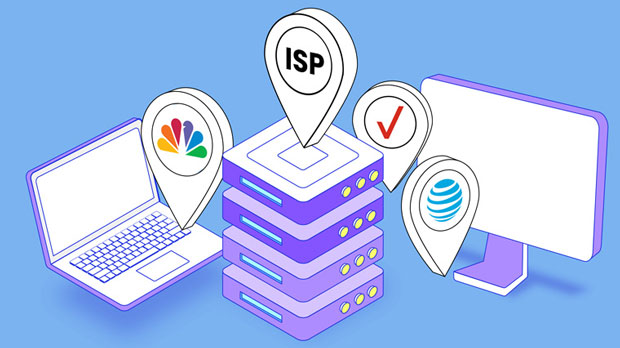When considering proxy services, it is essential to understand the price differences between Kickass Dedicated Proxy and Shared Proxy. These two options cater to different needs and offer varying levels of performance, security, and reliability. Kickass Dedicated Proxies are generally priced higher due to their exclusive nature, where users have sole access to a specific proxy server. On the other hand, Shared Proxies are more affordable as the same IP is shared among multiple users. This price disparity can significantly impact your decision, depending on your budget and requirements. In this article, we will explore the key differences between Kickass Dedicated and Shared Proxies, breaking down the factors that contribute to their pricing structures, and helping you make a more informed choice. 1. What is a Dedicated Proxy?A Dedicated Proxy is a private proxy service that provides a unique IP address for an individual user. The user is the only one accessing the proxy server, which ensures better security, privacy, and performance. Dedicated proxies are commonly used by businesses or individuals with high privacy demands or specialized tasks that require a consistent IP address. This exclusivity comes at a premium price, as users are the sole occupants of the proxy server.2. What is a Shared Proxy?A Shared Proxy, as the name suggests, is a proxy service where multiple users share the same IP address. This option is more affordable and suitable for individuals or small businesses that do not require the same level of performance or privacy. While shared proxies are cost-effective, they often come with drawbacks such as slower speeds and higher risk of detection by websites, as multiple users are accessing the same server. Shared proxies are best for general browsing or tasks that don’t require high security or privacy.3. Factors Influencing the Price DifferenceSeveral factors contribute to the price difference between Kickass Dedicated and Shared Proxies. Understanding these factors can help clarify why dedicated proxies are more expensive:ExclusivityThe main difference between dedicated and shared proxies is exclusivity. With a dedicated proxy, the user has exclusive access to the server, ensuring that they are not sharing bandwidth or IP addresses with others. This reduces congestion and provides a more stable connection. Shared proxies, however, are often used by several individuals at the same time, which can cause slower speeds and less stability. As a result, dedicated proxies command a higher price because they offer enhanced performance and reliability.Speed and PerformanceDedicated proxies offer superior speed and performance because the bandwidth is not divided among multiple users. Since there are no shared resources, users experience faster browsing speeds and better overall performance. In contrast, shared proxies often experience slower speeds, especially during peak usage times when multiple people are accessing the same proxy server. Businesses or individuals who rely on fast, uninterrupted internet connections are willing to pay more for the reliability offered by dedicated proxies.Privacy and SecurityDedicated proxies are more secure than shared proxies because they are not shared with other users. This provides an additional layer of privacy, making it more difficult for hackers to track or identify the user’s activities. Shared proxies, by contrast, pose a higher risk of security breaches because other users on the same server may engage in malicious activities, potentially exposing the entire group to attacks or surveillance. Due to the increased security and privacy offered by dedicated proxies, they are priced higher to reflect these benefits.Use Case and PurposeThe intended use of the proxy can also affect the price difference. Dedicated proxies are often used for tasks that require anonymity, high-speed browsing, or specific geolocation requirements, such as managing multiple social media accounts or conducting automated web scraping. These activities demand a high level of reliability, which is why dedicated proxies are priced higher. On the other hand, shared proxies are typically sufficient for less demanding tasks such as general browsing, accessing public content, or occasional online purchases, making them more affordable for budget-conscious users.4. Advantages of Kickass Dedicated ProxiesKickass Dedicated Proxies offer several advantages that justify their higher price:Improved PerformanceSince dedicated proxies are not shared with other users, the performance is much better. Users can expect faster speeds, more consistent connections, and minimal downtime. This is especially important for businesses or individuals who rely on the internet for high-stakes tasks.Better ControlDedicated proxies provide greater control over the server and its settings. Users can configure their proxy settings to suit their specific needs, whether they require certain security protocols, IP locations, or specific browser behaviors.Enhanced PrivacyDedicated proxies provide a higher level of privacy, as there are no other users accessing the same IP address. This means that your online activity is less likely to be tracked or flagged by websites. Dedicated proxies are ideal for users who are concerned about maintaining privacy while browsing the web or conducting online activities.5. Advantages of Kickass Shared ProxiesWhile shared proxies are less expensive, they still offer benefits that make them a good choice for certain users:Cost-EffectiveThe main advantage of shared proxies is their affordability. Because the cost is split among multiple users, shared proxies are an attractive option for those on a budget or those who don’t need high-performance proxies. For casual users or small-scale operations, shared proxies can be an economical choice.Easy to UseShared proxies are easy to set up and use, making them a good option for individuals who want a hassle-free experience. They are often provided with simple configuration instructions and require little maintenance. This ease of use makes shared proxies an excellent option for beginners.6. Choosing the Right Proxy Based on Your NeedsWhen deciding between Kickass Dedicated and Shared Proxies, consider your specific needs. If you require fast speeds, reliable performance, and high security, a dedicated proxy is worth the investment. On the other hand, if you only need basic proxy services for casual use, a shared proxy can meet your needs without breaking the bank.ConclusionIn conclusion, the price difference between Kickass Dedicated and Shared Proxies primarily stems from their level of exclusivity, performance, privacy, and security. Dedicated proxies offer a superior experience in terms of speed, control, and anonymity, making them the ideal choice for users with high demands. Shared proxies, while more affordable, may not provide the same level of performance or security, making them better suited for less intensive use cases. By understanding the key differences and evaluating your needs, you can make an informed decision about which proxy service best fits your requirements and budget.
Jul 25, 2025


































































